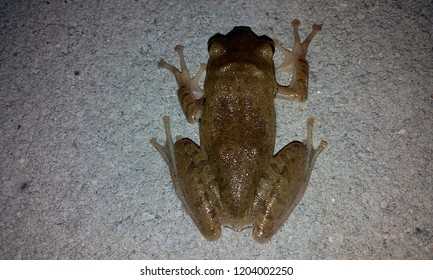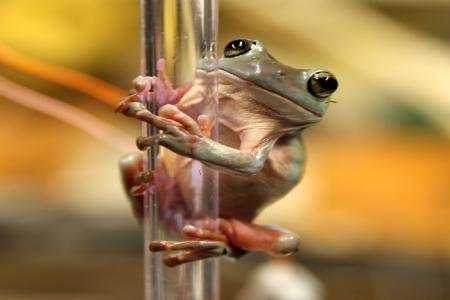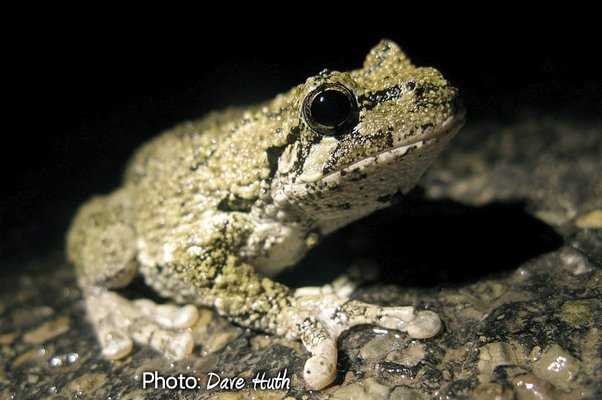Can Frogs Really Climb Walls and What’s the Truth?
One of the most fascinating questions about frogs is whether they have the ability to climb walls. Many people have heard stories or seen videos of frogs scaling vertical surfaces, but is it really true? Is this just a myth or is there some truth to it?
Recent scientific research has shed light on this topic, revealing that yes, frogs can indeed climb walls. It may seem astonishing, considering their squat bodies and short legs, but frogs have some unique adaptations that allow them to defy gravity.
One key adaptation is the adhesive pads on their feet. These specialized pads are covered in tiny, hair-like structures called setae, which create a strong grip on surfaces. The combination of the adhesive pads and the setae enables frogs to cling to walls and other vertical surfaces, even smooth ones like glass.
But how do frogs actually climb? It turns out that they use a combination of hopping and crawling movements. First, they hop towards the wall, using their powerful hind legs to propel themselves. Then, they use their forelimbs to crawl upwards, while their hind legs push off against the surface. This combination of hopping and crawling motions allows frogs to move vertically and reach higher points.
So, the next time you see a frog perched on a wall, you can marvel at its incredible ability to climb. Frogs may not be known for their wall-climbing skills like spiders or geckos, but they have certainly mastered the art in their own unique way.
Unveiling the Astonishing Reality of Frog’s Wall Climbing Abilities
Can frogs really climb walls?
Contrary to popular belief, frogs possess specialized adaptations that enable them to successfully scale vertical surfaces. This ability is not restricted to a particular species of frog; rather, it is a shared trait among numerous frog species across the globe.
Unraveling the mechanics
So how do frogs defy gravity to climb walls? The answer lies in their unique anatomy and behavior. Frogs have specially adapted toe pads that create a strong adhesive force, allowing them to cling onto various types of surfaces. Additionally, their muscular legs provide the necessary strength and agility to propel themselves upwards. This combination of adhesive pads and muscular limbs allows frogs to effortlessly navigate vertical terrains.
Frog climbing a wall
The ability of frogs to climb walls has significant ecological implications. It enables them to access new habitats, expand their geographic range, and find food sources that may be inaccessible to other animals. Additionally, wall climbing serves as a survival strategy for frogs, allowing them to escape from predators or seek refuge in higher ground during times of flooding or adverse environmental conditions.
Comparative analysis
Behavioral patterns and human applications
Exploring the Myth: Do Frogs Have the Ability to Scale Vertical Surfaces?
The Curious Question
For years, scientists and nature enthusiasts have puzzled over whether or not frogs can truly scale vertical surfaces. The idea of these small creatures effortlessly climbing walls seems almost too incredible to be true. But recent research has shed new light on this phenomenon, revealing some surprising facts about frog locomotion.
Astonishing Discoveries
- Contrary to popular belief, not all frog species possess the ability to climb walls. Some frogs have specialized adhesive pads on their feet that enable them to adhere to various surfaces, including walls.
- This unique adaptation allows wall-climbing frogs to effortlessly traverse vertical surfaces, defying gravity in the process.
- Research has revealed that the secret to frog wall climbing lies in the specialized structure of their toe pads, which are covered in thousands of tiny hair-like structures called “setae.”
- Each seta is coated with a thin layer of mucus, creating an adhesive effect that allows the frog to cling to surfaces.
- Furthermore, frog toe pads are highly deformable, meaning they can conform to irregularities in the surface and increase the contact area, enhancing their climbing ability.
The Evolutionary Puzzle
Scientists are still unraveling the evolutionary origins of frog wall climbing. It is believed that this ability has evolved independently in different frog lineages, suggesting that it has significant evolutionary advantages.
Ecological Significance
Comparative Analysis
The Fascinating Behavior
Scientists are also exploring the behavioral patterns associated with frog wall climbing. Some studies suggest that wall climbing is primarily used by frogs for reproductive purposes, allowing them to reach higher and safer breeding sites away from potential predators.
Potential Applications

The unique adhesive properties and climbing abilities of frogs have sparked interest in the field of biomimicry. Scientists and engineers are studying the mechanisms behind frog wall climbing to develop innovative technologies, such as climbing robots and adhesives.
Looking Ahead
Scientific Breakthrough: Research Reveals the Secrets of Frog Wall Climbing
Can frogs really climb walls? This long-standing question has finally been answered through groundbreaking research.
For years, scientists and nature enthusiasts have marveled at the ability of certain frog species to effortlessly traverse vertical surfaces. However, the mechanics behind this remarkable feat remained shrouded in mystery.
Thanks to recent advancements in technology and research methods, scientists have finally unlocked the secrets of frog wall climbing.
High-speed cameras, sophisticated sensors, and specialized equipment have enabled researchers to capture and analyze the intricate movements of these fascinating creatures.
The key to frog wall climbing lies in their unique anatomical adaptations. Through extensive study and observation, scientists have discovered that frogs possess specialized adhesive pads on their feet. These pads are composed of tiny hair-like structures called setae, which create a molecular adhesion between the frog’s feet and the wall surface.
This adhesion, combined with the frog’s remarkable muscular strength and agility, allows them to scale walls and other vertical surfaces with ease.
Furthermore, researchers have also found that certain frog species are more proficient climbers than others. Some frogs exhibit enhanced adhesion capabilities, while others possess greater muscle power, allowing them to conquer even smoother surfaces.
The ecological significance of frog wall climbing cannot be overlooked. Many frog species rely on this adaptation for survival and reproduction. By being able to navigate a variety of terrains, including tree trunks, rocks, and even man-made structures, they can access new food sources, escape predators, and find suitable breeding grounds.
Unraveling the Mechanics: How Do Frogs Defy Gravity to Climb Walls?
It may seem unbelievable, but frogs possess an extraordinary ability to climb walls. These small amphibians, known for their hopping and swimming skills, have managed to defy gravity in yet another astonishing way. But how do they do it? What are the mechanics behind this fascinating feat?
Muscular Strength and Grip
In addition to their muscular strength, frogs also have specialized toe pads and sticky secretions that provide them with a strong grip on various surfaces. These toe pads are covered in thousands of tiny hair-like structures called papillae, which create intricate microstructures that enhance the adhesive properties of the pads.
Adhesive Secretions
The sticky secretions produced by frogs serve multiple purposes in their wall climbing abilities. Firstly, these secretions allow the frogs to adhere to surfaces, preventing them from slipping or falling. Secondly, the secretions can be controlled by the frogs, allowing them to adjust the stickiness of their toe pads based on the surface they are climbing.
Researchers have discovered that these secretions are a combination of viscous and elastic substances, which help frogs maintain their grip on walls. The viscoelastic nature of these secretions allows them to flow and conform to the microstructures on the surface, increasing the contact area and maximizing adhesion.
Body Angle and Movement
Frogs utilize a specific body angle and movement pattern to effectively climb walls. They position their bodies at an angle that maximizes their contact with the surface, ensuring optimal adhesion. By continuously adjusting their body angle and using a combination of vertical and horizontal movements, frogs are able to navigate vertical surfaces smoothly.
Counteracting Gravity
Another fascinating aspect of frog wall climbing is their ability to counteract the force of gravity. Through their specialized body adaptations and movement techniques, frogs are able to distribute their body weight in a way that effectively offsets the downward pull of gravity. This allows them to maintain their position and move against the force of gravity without slipping or falling.
The mechanics behind frog wall climbing are truly remarkable. Through their muscular strength, specialized toe pads, sticky secretions, body angle, and movement patterns, frogs have evolved a unique set of adaptations that enable them to defy gravity and climb walls effortlessly. Further research into these mechanics could lead to new insights into material adhesion and inspire advancements in technology.
Adhesive Pads: A Frog’s Secret Weapon
The adhesive pads on a frog’s feet are covered in mucus, which enhances their adhesive properties. The mucus provides additional friction and helps the frog maintain its grip on the wall. This unique combination of adhesive pads and mucus allows frogs to cling to various surfaces, including smooth walls and even ceilings.
Muscular Legs: Powering the Climb

In addition to their adhesive pads, frogs also rely on their powerful hind legs to propel themselves upwards. These legs are specially adapted for jumping and have strong muscles that generate the force needed to lift the frog’s body off the ground and onto the wall.
When a frog climbs a wall, it uses its hind legs to push off the surface and propel itself upwards. The combination of strong leg muscles and the adhesive pads working together allows the frog to maintain a firm grip as it moves vertically. This unique coordination of muscles and adhesive pads is what gives frogs their unparalleled climbing ability.
The Role of Body Shape and Toe Anatomy
The shape of a frog’s body also plays a crucial role in its climbing abilities. Frogs with shorter, stockier bodies tend to be more adept at wall climbing than those with longer, slimmer bodies. This is because their compact bodies provide better stability and leverage against the wall’s surface.
Overall, the unique adaptations of adhesive pads, muscular legs, and body shape make frogs highly efficient climbers of walls and other vertical surfaces. It is through the combination of these incredible adaptations that frogs have mastered the art of defying gravity and continue to amaze scientists and nature enthusiasts alike.
Evolutionary Wonders: How Did Frogs Develop the Ability to Climb Walls?

The incredible ability of frogs to climb walls has long fascinated scientists and nature enthusiasts alike. But how did these amphibians develop this remarkable adaptation? The evolutionary journey of frogs provides us with fascinating insights into their unique wall climbing capabilities.
Through natural selection, certain frog species developed the ability to climb walls, enabling them to access new food sources, escape predators, and find suitable mates. This adaptation required significant anatomical and physiological changes.
One key factor in the evolution of frog wall climbing abilities is their specialized toe pads. These small adhesive structures, located on the ends of their toes, allow frogs to adhere to vertical surfaces. The toe pads are covered in tiny hair-like structures called setae, which create a strong bond with the surface. This unique adaptation enables frogs to cling to walls with remarkable ease.
Another crucial aspect of their evolution is the modification of their limb muscles and skeletal structure. Unlike their aquatic counterparts, climbing frogs possess stronger and more flexible limbs, allowing them to generate enough force to push against gravity while climbing. Their elongated limbs and toes provide better reach and grip, further enhancing their climbing abilities.
The evolution of frog wall climbing abilities also involved changes in their nervous system. These adaptations enable them to coordinate their movements and maintain balance while scaling vertical surfaces. By fine-tuning their motor skills, frogs have become highly skilled climbers that can navigate even the most challenging terrains with precision.
Furthermore, the development of their respiratory system played a crucial role in their adaptation to climbing. Climbing frogs possess lungs specially adapted to cope with the increased demands of oxygen while exerting themselves during vertical locomotion. This enables them to sustain their energy during climbing activities, enhancing their overall climbing performance.
The evolutionary wonders of frog wall climbing highlight the incredible adaptability of these amphibians. Through millennia of natural selection, frogs have transformed from aquatic dwellers to skilled climbers capable of scaling vertical surfaces. Their specialized toe pads, modified limbs, improved nervous system, and respiratory adaptations have equipped them with the tools needed to conquer the world of wall climbing.
Unprecedented Discoveries: Surprising Facts About Frog Wall Climbing
| 1. Adhesive Pads | One of the most fascinating discoveries is that frogs have adhesive pads on their toes. These sticky pads allow them to grip onto various surfaces, including walls, with incredible precision. The pads contain small hair-like structures that create strong adhesive forces, enabling frogs to maintain their grip even on slippery or vertical surfaces. |
| 2. Weight Distribution | Another surprising fact is that frogs are able to distribute their weight effectively while climbing walls. Studies have found that when a frog is climbing, it positions its center of mass towards its rear legs, which helps to maintain stability and prevent it from falling. |
| 3. Leg Muscles | Frogs possess incredibly strong leg muscles that provide them with the power and agility needed for wall climbing. These muscles allow frogs to generate enough force to propel themselves upwards against the force of gravity. Additionally, the muscles in their toes play a crucial role in gripping onto surfaces. |
| 4. Species Variation | Not all frog species have the same ability to climb walls. While some species, such as tree frogs, are well-known for their climbing abilities, others may not possess the necessary adaptations. This variation among species highlights the diverse evolutionary paths that frogs have taken. |
| 5. Ecological Benefits | The ability of frogs to climb walls has important ecological implications. It allows them to access new food sources and habitats that might otherwise be inaccessible. This ability also provides them with a means of escape from predators and helps them avoid competition for resources on the ground. |
Ecological Significance: Why Is Frog Wall Climbing Important in Their Habitat?
Frogs are renowned for their ability to climb walls, and this unique adaptation plays a crucial role in their habitats. The ability to climb walls enables frogs to access a wider range of resources and escape predators.
One of the primary reasons that frog wall climbing is important in their habitat is for foraging. By climbing walls, frogs can reach new areas with abundant food sources, such as insects, spiders, and other small invertebrates. This allows them to diversify their diet and ensure they have enough energy to survive and reproduce.
In addition to food access, frog wall climbing also aids in their reproductive behavior. Many frog species lay their eggs in vegetation or on overhanging surfaces near water bodies. By having the ability to climb walls, frogs can reach suitable locations for egg deposition, ensuring the survival of their offspring. Wall climbing also assists in finding secure spots away from predators, increasing the chances of successful reproduction.
Furthermore, frog wall climbing has ecological implications in terms of dispersal and population dynamics. By being able to climb walls, frogs can move across different habitats and colonize new areas. This movement is essential for gene flow and maintaining healthy populations. Additionally, frog wall climbing provides an opportunity for frogs to explore different microhabitats and adapt to changing environmental conditions.
Can All Frog Species Climb Walls or Just a Few?
In the fascinating world of frogs, one intriguing question arises: can all frog species climb walls, or is this ability limited to only a few? The truth is, while many frog species possess the capability to climb walls, not all of them have developed this incredible adaptation.
Among the thousands of frog species inhabiting different habitats worldwide, a select few have evolved the necessary physical attributes to scale vertical surfaces. These specialized frogs are equipped with unique adaptations that allow them to defy gravity and conquer seemingly impossible barriers.
One notable example of a wall-climbing frog is the tree frog, a species known for its exceptional climbing abilities. Tree frogs have specialized toe pads covered in tiny, adhesive structures called toe disks. These disks create a suction-like effect, enabling them to cling to various surfaces, including walls, trees, and even glass.
In addition to tree frogs, certain other frog species have also developed the ability to climb walls. Some examples include the tomato frog, the glass frog, and the red-eyed tree frog. These species have evolved various adaptations, such as sticky skin or specialized feet, to enable them to traverse vertical terrain.
However, it is crucial to understand that not all frogs possess the capability to climb walls. Many species are adapted to live in specific environments and lack the physical traits required for wall climbing. These frogs rely on other survival strategies, such as swimming, burrowing, or jumping, to navigate their habitats.
The ability of some frog species to climb walls is a fascinating subject of study for scientists. By examining the variations in physical characteristics and adaptations between different frog species, researchers can gain insights into the evolutionary processes that have led to the development of wall climbing abilities in certain frogs.
Behavioral Patterns: Do Frogs Use Wall Climbing for Survival or Reproduction?
Frogs have evolved to be excellent climbers, a skill that allows them to venture into new habitats and access resources that would otherwise be inaccessible. Wall climbing is not exclusive to a certain species of frogs; rather, it is a widespread behavior observed in various frog species across different environments.
Additionally, wall climbing allows frogs to access food sources that may be found on walls or higher surfaces. This can include insects, spiders, and other small invertebrates that are attracted to vertical structures. By utilizing their climbing abilities, frogs can expand their foraging opportunities and increase their chances of finding sustenance.
Wall climbing in frogs is also associated with reproduction. Many species of frogs have complex courtship behaviors, and climbing plays a role in attracting mates and establishing territories. Male frogs may climb walls or trees to display their prowess and attractiveness to potential female partners. This behavior serves as a visual cue for females to assess the health and fitness of the males.
Harnessing the Superpower: The Potential Human Applications of Frog Wall Climbing Abilities
It may come as a surprise, but the extraordinary ability of frogs to climb walls has caught the attention of scientists and engineers, leading to exciting possibilities for human technology. The unique adaptations and mechanics that allow frogs to defy gravity and effortlessly cling to vertical surfaces have sparked inspiration for various applications that could revolutionize industries and improve our daily lives.
1. Adhesive Materials
The study of frog wall climbing has provided valuable insights into the development of new adhesive materials. Scientists are working on creating synthetic adhesives that mimic the frog’s ability to firmly attach to different surfaces. These innovative materials could be used in construction, allowing for the creation of structures that can adhere to walls or vertical surfaces without the need for traditional bonding methods.
2. Surgical Tools
The agile climbing skills of frogs have also inspired the design of new surgical tools. Researchers are exploring the idea of using frog-inspired adhesive pads or suction cups on surgical instruments. These specialized tools could be utilized during minimally invasive surgeries, providing surgeons with improved precision and control when navigating difficult anatomical structures.
3. Robotics and Exploration
Researchers are also investigating the potential use of frog wall climbing abilities in robotics and exploration. By incorporating the principles of frog climbing into robot design, engineers hope to create robots capable of scaling walls or exploring difficult terrains. These robots could be deployed in search and rescue missions, providing assistance in areas inaccessible to humans.
4. Advanced Materials Testing
The incredible abilities of frogs to climb walls have far-reaching implications beyond their natural habitat. By harnessing these superpowers, scientists and engineers can unlock a world of possibilities, from improved adhesives to innovative surgical tools and advanced robotics. The study of frog wall climbing continues to inspire and push the boundaries of human ingenuity, hinting at a future where we can benefit from the remarkable feats of these amphibious creatures.
The Future of Frog Research: What Lies Ahead in Studying Wall Climbing?
Frog wall climbing plays a crucial role in their natural habitats, particularly in rainforests and other lush environments where vertical surfaces are abundant. By studying the behavioral patterns of different frog species, researchers can gain insights into the reasons behind this fascinating ability.
It is believed that frogs use wall climbing for various purposes, including finding food and evading predators. Therefore, further research can shed light on the specific strategies and adaptations frogs have developed to survive in diverse habitats.
Potential Technological Applications
The unique ability of frogs to climb walls has captivated the interest of engineers and scientists alike. The knowledge gained from studying frog wall climbing could potentially inspire the development of innovative technologies and materials.
Expanding Comparative Analysis

While some frog species have been shown to possess wall climbing abilities, there is still much to learn about the extent of this behavior across different frog families and genera. Comparative analysis can help identify common traits and evolutionary adaptations that enable certain species to climb walls.
By studying a wide range of frog species, researchers can gain valuable knowledge about the underlying genetic and physiological mechanisms that contribute to wall climbing. This comparative approach can reveal evolutionary trends and potentially uncover new insights into the origin and development of this remarkable ability.
Advancing Conservation Efforts
Such knowledge can inform conservation initiatives and help design better strategies for protecting frog populations and their natural habitats. Additionally, the study of frog wall climbing may also contribute to the preservation of other species that share similar ecological niches.

I’m Lena Adams—a product of an unconventional upbringing in the African wilderness. My father, a daring explorer of African wildlife, sparked my fascination with reptiles, a passion that intertwined with the tragic loss of my mother during an expedition, leaving an indelible mark on my life. Driven to understand the creatures that captivated my parents, I embarked on my journey, sharing insights about reptiles, frogs, and lizards on my website. Through my explorations and conservation efforts, I honour my family’s legacy while seeking connections—to the creatures, nature, and the mother whose presence I yearn to understand.
